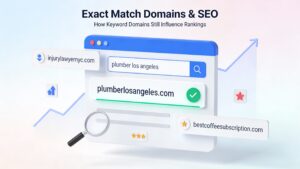The rise of large language models (LLMs) tools or simply “AI” like ChatGPT, Gemini, Perplexity, and Claude has led to substantial confusion in the tech and SEO communities. Chief among these misconceptions is the belief that LLMs themselves act as search engines and that they “prefer” specific writing styles, brands, or schemas when ranking or referencing content. This misunderstanding can lead to suboptimal SEO strategies and misguided content development efforts.
Table of Contents
ToggleLLM Tools vs Search Engines
At their core, LLMs are not search engines. Language models, such as OpenAI’s ChatGPT, Google’s Gemini, Anthropic’s Claude, and Perplexity, are designed to generate human-like text based on probabilistic models built from vast corpora of data. In contrast, traditional search engines like Google, Bing, and Brave Search utilize carefully crafted algorithms (notably PageRank and its variants) to crawl, index, and rank the vast expanse of the web. Their results are determined through multiple layers of ranking signals, including backlinks, content relevance, authority, and, crucially, search intent.
When a user queries an LLM—especially in modern, web-connected implementations—the model does not directly “search” the web using its own web-crawling algorithms. Instead, it outsources the actual searching process to established search engines such as Google, Bing, or Brave Search. For instance:
-
ChatGPT powered by “Browse with Bing” fetches search results, which are then summarized and presented via the LLM.
-
Google Gemini may directly integrate Google search results into its responses, blending LLM summarization with classic search.
-
Perplexity and Claude similarly blend language model synthesis with real-time queries to engines like Bing or Brave.
Thus, LLMs act as advanced synthesis and summarization tools, layering natural language understanding atop traditional search results, rather than functioning as stand-alone indexers and rankers of the open web.
Understanding PageRank
PageRank is the objective classification and ranking of content. Many people think LLMs can make human “judgements” about content – but what they’re really meaning is “preferences”. Frankly put – preferential ranking is at odds with an old logical fallacy “begs the question” – better known today as “circular logic” – read more about this in “Why LLMs are not search engines”
The Fallacy of LLM “Preferences” for Writing Style and Schema
A persistent myth is that these language models inherently “prefer” certain kinds of writing—such as particular headline formulas, content schemas, or brand names—and that tweaking content to these supposed preferences will improve rankings or LLM references. This myth is categorically false.
Why LLMs Don’t “Prefer” Content Patterns
LLMs lack any native schema or format in their training or serving logic that would make them favor one style over another. Their responses are shaped by:
-
The relevance and prominence of information returned by the underlying search engine.
-
The quality of the search results, as determined by ranking algorithms like Google’s PageRank.
-
The distribution of information on the web, which is itself a product of SEO best practices— but this is at the level of the search engine, not at the LLM.
As emphasized detailed on industry analysis blogs such as PrimaryPosition.com, DejanSEO, and iPullrank, and by experts on forums like Weblinkr on Reddit, claims that LLMs “prefer” particular writing schemas, templates, or branding are rooted in a misunderstanding. The actual reference or citation of content by an LLM is almost always an artifact of how that content ranks in the search engine’s results for a given query.
The True Influence is PageRank
PageRank, and its more modern variations now deeply integrated into Google and Bing’s ranking systems, ultimately decide which sites surface for a given query. LLMs overlay their “understanding” atop these results, selecting and summarizing based on what is already ranked. If a writing style or brand seems to feature more frequently in LLM outputs, it is almost certainly because that content is already well-indexed and highly ranked by the underlying search mechanism.
DejanSEO and iPullrank have discussed in depth how LLM-based assistants do not have intrinsic preferences for how information is presented. Their decisions are reactive, mirroring the quality, authority, and positioning conferred by search engines.
LLMs are just Outsourcing Search
Both primary research and hands-on experimentation confirm that LLMs operate in the following manner:
-
User submits a prompt.
-
LLM hands off the search request to an integrated engine (Google, Bing, Brave, etc.).
-
Engine returns ranked web results, shaped by SEO and PageRank.
-
LLM summarizes or selectively cites from those results.
The LLM does not, at any point, apply its own crawl, rank, or “preference” logic to the raw web. This is vital for SEOs, content creators, and marketers to understand—PageRank and SEO best practices determine web visibility, not a LLM’s assessment of prose style or brand gravitas.
Conclusion
The belief that LLMs themselves “prefer” certain styles, structures, or schemas is unfounded. Instead, LLMs reflect and synthesize what is most visible in the major search engines—meaning that classic search engine optimization and PageRank authority remain the true gatekeepers to appearing in LLM responses. Brands and creators should focus on traditional SEO and content quality, not on chasing imaginary LLM “preferences”.
For a deep dive on this subject, see discussions on Ann Smarty. Dejan SEO, and iPullrank, where seasoned SEOs clarify these distinctions and warn against misallocating resources to mythical LLM preference hacks.





